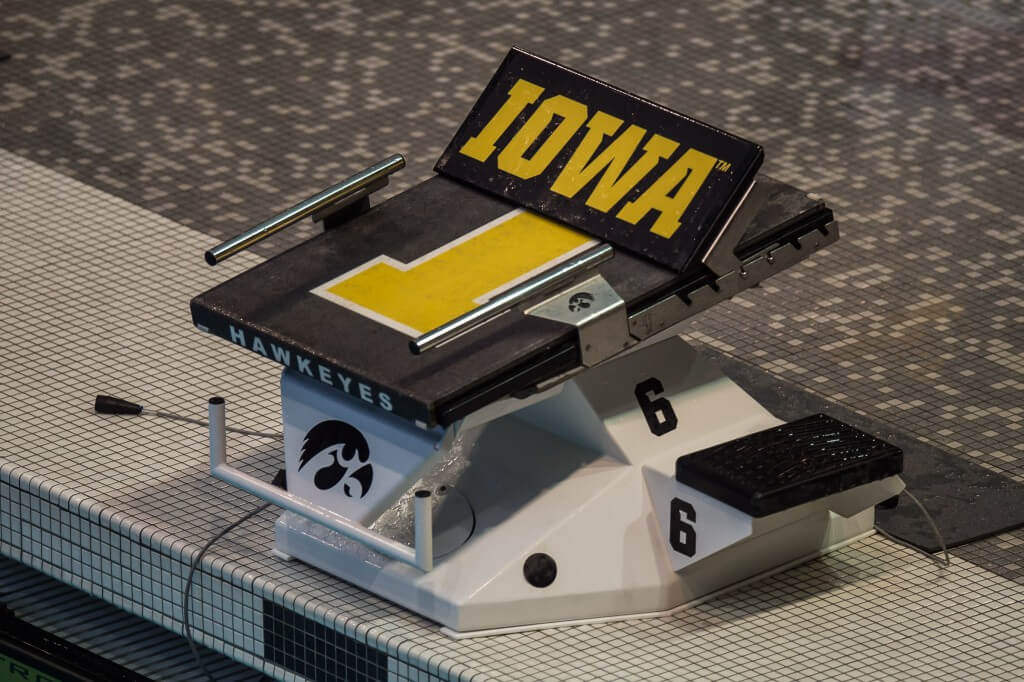#SaveOlympicSports: Endangered and Cut Teams Speak Out

#SaveOlympicSports: Endangered and Cut Teams Speak Out
Since the start of the COVID-19 pandemic, Olympic sports at universities around the country have seen a significant uptick in cuts, with administrations citing financial deficits and revenue losses related to the coronavirus. Ninety one Division I teams have been cut so far, according to the COVID-19 Era Dropped College Sports Tracker, 15 of which are aquatic teams. Even amid the growing cuts, many athletes have refused to give up without a fight.
Following proposed cuts to the University of Minnesota’s men’s gymnastics, tennis and indoor track and field teams, student athletes came together to march against the decision on Sep. 16. Cutting these sports was proposed after the Big Ten voted to suspend its football season this year, a decision which has since been reversed.
Despite backlash from student athletes and the alumni community, the Minnesota Board of Regents met on Oct. 9 and accepted a new proposal to cut men’s gymnastics, tennis, and indoor track and field, saving men’s outdoor track and field in a 7-5 vote. This is just the most recent example of pushback against cuts. Some student athletes have taken to social media to try and make a change.
One college gymnast, who chose to remain anonymous, created an account on Instagram, @saveolympicsports, which includes posts with updates and instructions regarding protesting the cuts, and a graphic for supporters to send around.
The creator also compiled a Link Tree in the description of the account, with links to different fundraising sites and petitions, including:
- Write to the University of Minnesota Board of Regents https://docs.google.com/document/d/1VXIl-1V2GNVfdaFzk4MprVrXVKNiRtqzselocSBtTSk/mobilebasic
- Donate to Save Iowa Sports https://www.savehawkeyesports.com/
- Save William and Mary Sports https://www.change.org/p/william-mary-save-william-mary-athletics?signed=true
- Get Involved to Help Save Dartmouth Swim and Dive https://savedartmouthswimdive.org/
- Donate to Preserve College Gymnastics https://collegegym.org/donate
- Donate to Reinstate University of Alaska Sports https://engage.alaska.edu/uaa/athletics
- Save Seattle Pacific Gymnastics https://www.change.org/p/seattle-pacific-university-administration-and-athletic-administration-reinstate-seattle-pacific-women-s-gymnastics
“What we had thought was, there’s no way we can make a difference if it’s just the gymnastics community trying to save one another, and I know that swim and track and all of them were getting cut too,” said the creator. “So we decided, why not try to bring everyone together and create a movement where we can all push toward a common goal of trying to save Olympic sports in the NCAA?”
Some cut teams have also created Instagram accounts, with William and Mary swim and dive, University of Minnesota men’s gymnastics, La Salle University men’s swimming and University of Iowa athletics among them.
The idea isn’t limited to Instagram. Searching #SaveOlympicSports on Twitter and Facebook will produce an array of articles, updates and opinions on recent cuts. While not all of these efforts have reversed decisions or even elicited a response from athletic administrations, William and Mary is one school whose students are making a noticeable difference.
The school announced its decision to drop seven sports on Sep. 3, including the men’s and women’s swim and dive teams. Since then, over one thousand students and alumni have signed a resolution opposing the decision, which was presented to William and Mary’s Board of Visitors on Sep. 23 along with 72 in-person statements from athletes, alumni and faculty. The men’s and women’s swim and dive team raised over $1 million, and the school athletic director, Samantha Huge, resigned.
The cuts to women’s swimming, volleyball and gymnastics were reversed by William and Mary athletics on Oct. 19, with men’s swimming, gymnastics and indoor and outdoor track remaining cut.
The social implications of slashing these teams are clear, and might inspire more caution among athletic departments contemplating the decision. Advocates to the cause feel that Olympic sports teams are too valuable to universities to be cut, as they increase university enrollment and provide scholarships to students who may not be able to afford college otherwise. According to the Intercollegiate Coach Association Coalition, Olympic sports athletes generated $3.6 billion in tuition to universities in 2020.
Universities also received criticism regarding the cost of their football programs in comparison to the cost of Olympic sports teams. Many believe that excessive spending on money-making teams like men’s basketball and football are to blame for cutting smaller programs.
The University of Iowa cut four sports teams in August, including men’s and women’s swimming and diving, men’s gymnastics and men’s tennis, citing financial shortfalls from COVID-19. Despite this, the majority of Iowa football’s assistant coaches received raises this year.
The message seems clear: When revenue losses occur within college athletics, Olympic sports are the first to go.
“Maybe there’s a root problem that these athletic departments are cutting for financial gain or what not,” said the creator of @Saveolympicsports, “but if you’re looking at it from a humane perspective, I didn’t think any of this was worth it.”
Despite administrations discouraging alumni and student fundraising efforts, pledges and donations to save Olympic sports teams continue to grow.




Great article K